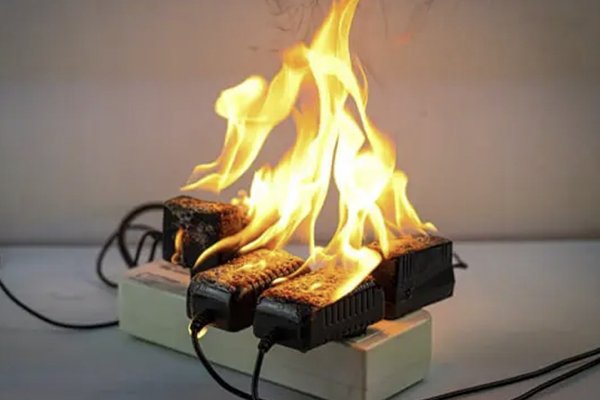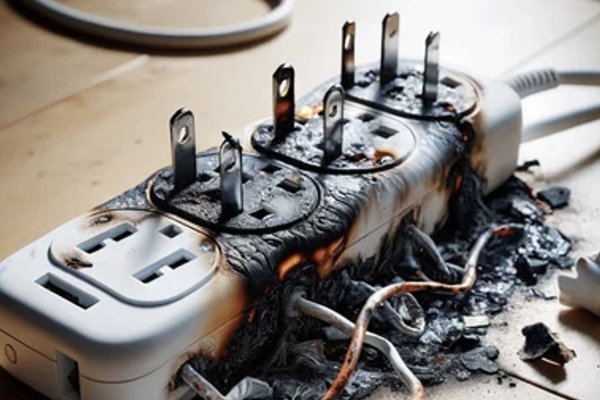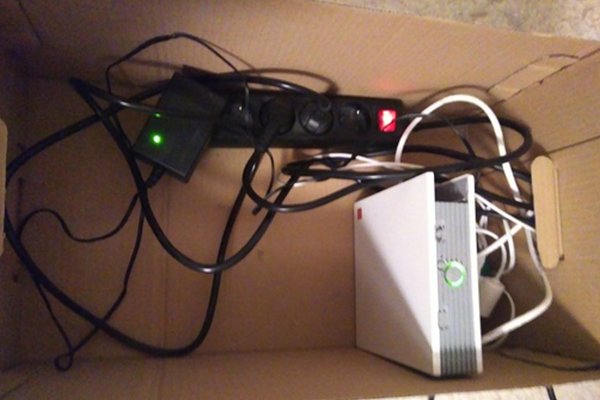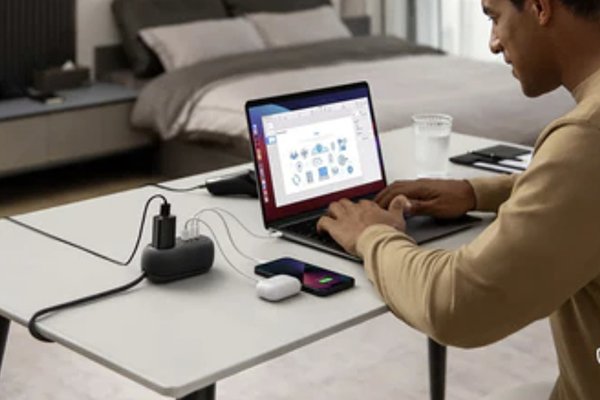Top Reasons Why Power Strips Catch Fire and How to Prevent Them

I once walked into a friend’s home office and smelled burning plastic. Turns out, a power strip behind their desk had quietly melted down. No sparks, no flames—just a near miss that could’ve ended badly.
Power strips1 can catch fire due to overloading2, low-quality manufacturing, improper placement, and poor usage habits. Knowing the key risks—and how to avoid them—can keep your home or office safe.
Let’s walk through the most common causes and how to avoid them without overthinking every plug.
Overloading the Power Strip: The Most Common Fire Hazard
We’ve all done it—plugged in “just one more thing.” But power strips aren’t limitless, and every extra device increases the risk.
Overloading3 happens when too many high-wattage appliances4 are plugged into one strip, exceeding its rated capacity. This generates heat, melts plastic, and can lead to electrical fires.

Signs You Might Be Overloading:
- Strip feels hot to the touch
- Circuit breaker frequently trips
- Lights flicker when devices are turned on
| Appliance Type | Average Wattage |
|---|---|
| Space heater | 1,500W |
| Hair dryer | 1,200–1,800W |
| Desktop computer | 400–600W |
| Phone/laptop charger | 10–100W |
Avoid plugging multiple high-wattage items into one strip—especially if it’s a basic, uncertified model. Always check the maximum load, and spread devices across different outlets if needed.
Using Low-Quality or Non-Certified Power Strips
I’ve seen some budget power strips5 that looked fine but failed under pressure. The truth is, not all power strips5 are created equal.
Cheap or uncertified power strips5 often use poor materials, thin wiring, and lack thermal or surge protection6. These can fail even under normal loads, turning into fire hazards.

What to Watch For:
- No CE, UL, ETL, or other certification marks
- Flimsy casing, lightweight construction
- Missing surge protection indicator light
| Certification | What It Means |
|---|---|
| CE (Europe) | Meets EU safety and performance rules |
| UL (US) | Tested for fire/electrical safety |
| ETL | Verified to national standards |
Always look for certified brands and avoid “no-name” power strips that cut corners. Spending a few extra dollars could save your devices—or your home.
Improper Placement: Why You Should Never Cover or Hide a Power Strip
We all want a clean setup—cables tucked away, outlets hidden from sight. But sometimes that desire for tidiness can become dangerous.
Covering power strips7 with rugs, furniture, or fabric traps heat and increases the risk of overheating and fire8. Power strips need ventilation to dissipate the warmth they generate.

High-Risk Placement Mistakes:
- Tucked behind curtains or inside drawers
- Covered by carpets or floor mats
- Placed near heat sources or under piles of clutter
| Placement Issue | Fire Risk |
|---|---|
| Covered by rug | Traps heat, no ventilation |
| Behind furniture | Easy to overload unseen |
| In damp areas | Electrical shorts possible |
Always place power strips on open, hard surfaces with plenty of air around them—and never block vents or indicator lights.
Prevention Tips: How to Use Power Strips Safely at Home or Office
Prevention isn’t complicated—it just takes a little awareness and a few good habits.
To use power strips safely, avoid overloading, inspect them regularly, use only certified models, and place them in open, dry locations. Treat power strips as temporary—not permanent—solutions.

Safe Use Checklist:
- ✅ Use CE/UL-certified models
- ✅ Check for heat, discoloration, or frayed cords
- ✅ Don’t daisy-chain multiple strips together
- ✅ Keep them off carpets and out of tight spaces
- ✅ Unplug when not in use or during storms
| Do This | Avoid This |
|---|---|
| Use one strip per wall outlet | Plugging one strip into another |
| Unplug unused devices | Leaving high-wattage items running |
| Inspect every 6 months | Using the same strip for 10+ years |
A power strip isn’t just an outlet multiplier—it’s a potential fire source if misused. With a little care, you can keep things simple and safe.
Conclusion
Power strips are handy—but they’re not invincible. Overloading, poor quality, and careless placement are common fire starters. The fix? Just a few thoughtful choices. Choose certified products, don’t overplug, and give your strip some breathing room. It’s one of the easiest ways to keep your space powered—and protected.
-
Understanding power strip safety can prevent potential hazards in your home or office, ensuring a safer environment. ↩
-
Learning about overloading risks can help you use power strips safely and avoid dangerous situations. ↩
-
Understanding the dangers of overloading can help you prevent electrical fires and ensure safety in your home. ↩
-
Knowing which appliances are high-wattage can help you manage your power usage and avoid overloading circuits. ↩
-
Explore this link to discover top-rated power strips that ensure safety and reliability, protecting your devices and home. ↩ ↩ ↩
-
Learn about surge protection to understand how it safeguards your electronics from voltage spikes, ensuring their longevity. ↩
-
Understanding safety tips for power strips can help prevent overheating and fire hazards in your home. ↩
-
Exploring prevention methods for overheating and fire can enhance your home’s safety and protect your family. ↩






